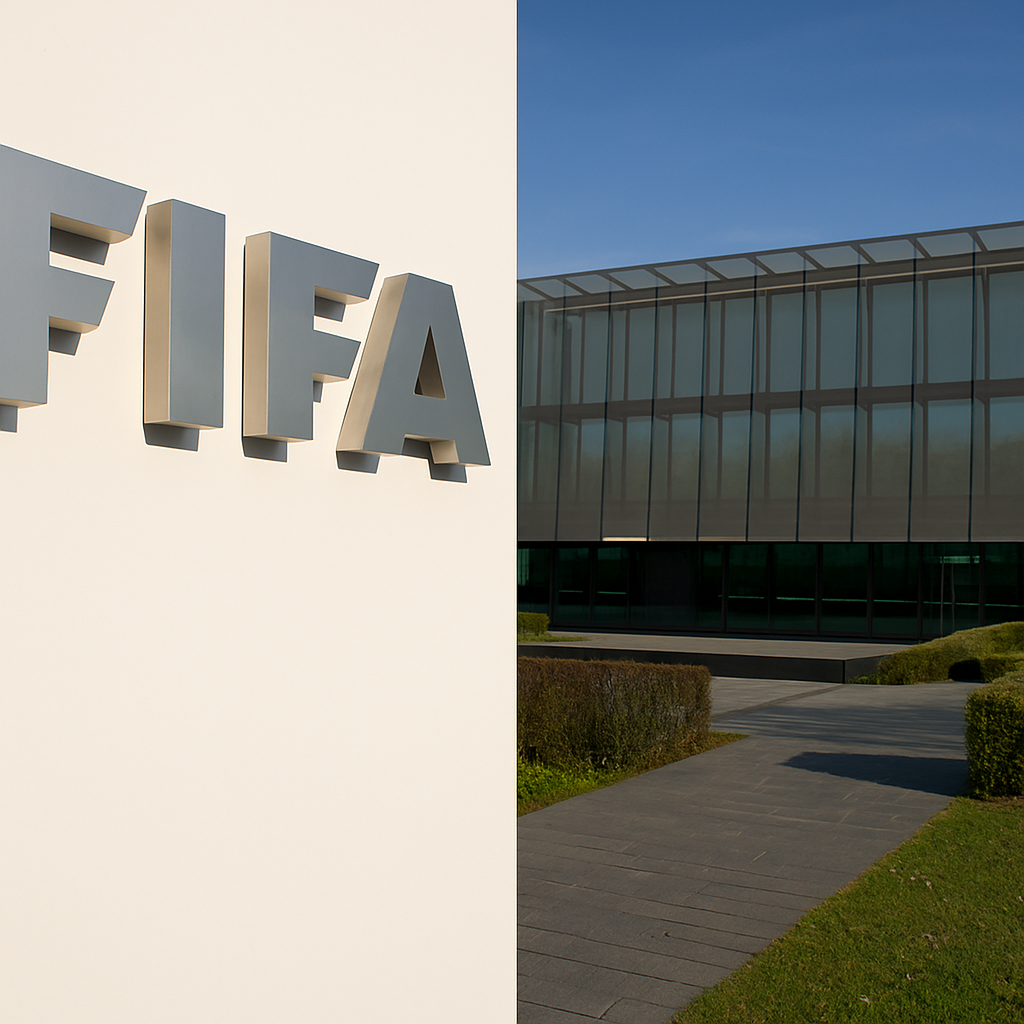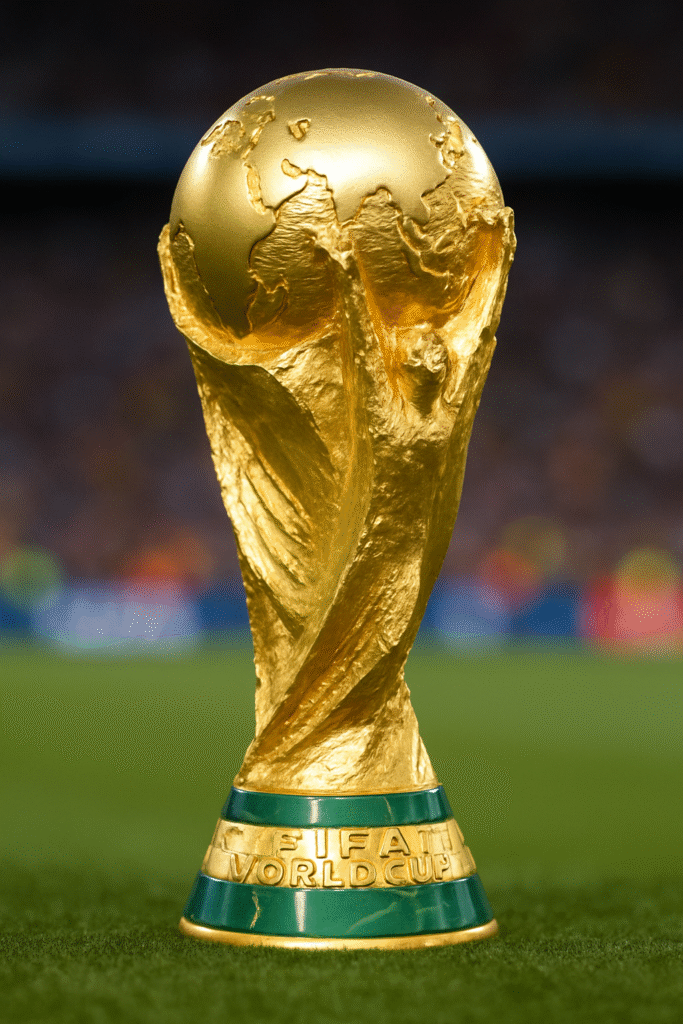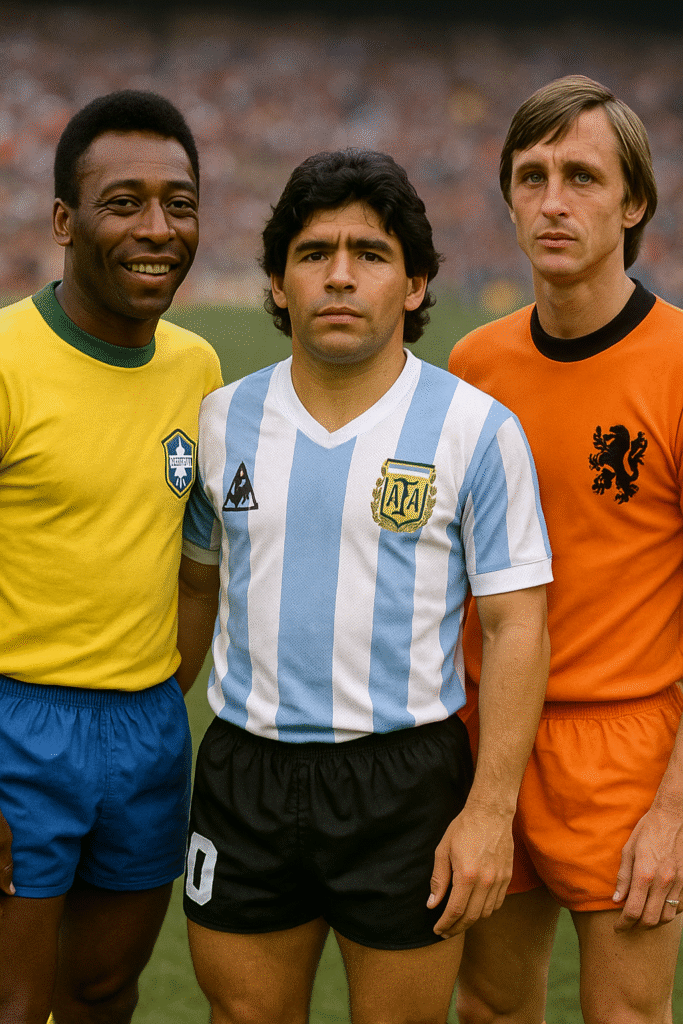A Global Success Story
From medieval kicking games to today’s global phenomenon, football’s origins in Europe set the stage for its world dominance. Modern football truly took shape in 19th-century Britain. In 1863, the Football Association codified unified rules and organized the first cup competitions. By the early 2000s, FIFA counted roughly 250 million players and over 1.3 billion fans worldwide, making football “the world’s most popular ball game.” European countries quickly formed leagues, clubs and international fixtures, and the sport spread rapidly through trade and colonial ties. Its simple appeal – a ball, a goal, a team – allowed it to leap boundaries and cultures, first across Europe and eventually to every continent.

Football and FIFA: Building a Global Community
Founded in 1904 by seven European associations, FIFA (Fédération Internationale de Football Association) became football’s international governing body. FIFA began organizing larger competitions, most notably the FIFA World Cup, which debuted in 1930 in Uruguay. FIFA now includes 211 member countries, rivaling the United Nations in global reach.

Each World Cup has boosted football’s visibility and appeal. For example, an estimated 26 billion combined TV viewers watched the 2010 World Cup finals. In 2018, over 3.5 billion people tuned in to watch matches in Russia, with 1.12 billion viewers watching the final alone. Major matches attract global advertisers and even political leaders, while the tournament’s prize – the iconic Jules Rimet Trophy, later replaced by the current gold trophy – symbolizes football’s universal power.
Football’s Explosive Growth Across Continents
Football in Africa is more than a game – it’s a social force. Nations like Cameroon, Nigeria, and Ghana have made their mark on the world stage, while domestic leagues and grassroots programs continue to thrive. The Africa Cup of Nations consistently draws huge crowds and massive television audiences.
In Asia, the sport has also grown rapidly. Japan and South Korea’s co-hosting of the 2002 World Cup sparked a football renaissance. Nations like China, India, and Indonesia are investing in academies and leagues. The Asian Football Confederation (AFC) now produces competitive teams in global tournaments.
Even in traditionally non-soccer-dominated regions like the United States, youth participation is soaring. Major League Soccer (MLS) has grown in popularity, with international stars and significant investment raising the sport’s profile. Across the Americas, football is a cultural staple – from Brazil’s flair to Argentina’s passion and Mexico’s fervor – defining much of the region’s identity.
You can also read about History of Sports
Football’s Stars: Icons Who Transcend Borders

Some football players have transcended the game to become global icons. Pelé, Diego Maradona, and Johan Cruyff were early heroes. In recent decades, Lionel Messi and Cristiano Ronaldo have dominated the sport, each winning numerous Ballon d’Or awards, setting goal-scoring records, and earning global fanbases in the hundreds of millions.
Other stars like Neymar, Kylian Mbappé, Mohamed Salah, and Marta (Brazil) continue to push boundaries. Their influence reaches beyond the pitch through advertising, social media, and cultural impact. These players inspire youth everywhere – from the streets of Rio to rural India.
Top Football Clubs and Their Global Influence
Football clubs are powerful ambassadors for the sport. Giants like FC Barcelona, Real Madrid, Manchester United, Bayern Munich, and others boast fanbases in the hundreds of millions. These clubs market themselves globally, maintain multilingual platforms, and tour internationally to engage supporters.

Stadiums such as Camp Nou and Old Trafford draw crowds of up to 100,000, becoming pilgrimage sites for fans. Success in the UEFA Champions League and domestic competitions amplifies their reach. Clubs like Juventus, Paris Saint-Germain, and Boca Juniors have become household names across continents.
Why Football Conquered the World
From its roots in Victorian Britain to the bustling cities of Africa and the arenas of Asia, football’s journey is one of passion and accessibility. It needed only a ball and a goal to become the planet’s most beloved sport. The growth of FIFA, the magnetism of the World Cup, the explosion of continental passion, and the rise of unforgettable stars and clubs have all contributed to this success.
Today, football is more than a sport – it is a global culture, a language spoken in cheers, goals, and shared dreams.
From medieval kicking games to today’s global phenomenon, football’s origins in Europe set the stage for its world dominance. Modern football truly took shape in 19th-century Britainbritannica.com. In 1863 the Football Association codified unified rules and organized the first cup competitions. This global football history is remarkable: by the early 2000s FIFA counted roughly 250 million players and over 1.3 billion fans worldwidebritannica.com, making football “the world’s most popular ball game” by any measurebritannica.com. European countries quickly formed leagues, clubs and international fixtures, and the sport spread through trade and colonial ties. The game’s simple appeal – a ball, a goal, a team – allowed it to leap boundaries and cultures, first across Europe and eventually onto every continent.
FIFA and World Cup Influence
Founded in 1904 by seven European associations, FIFA (the Fédération Internationale de Football Association) became soccer’s global governing bodyussoccer.com. Under FIFA’s umbrella, football clubs and national teams organized ever-larger competitions. The quadrennial FIFA World Cup began in 1930 in Uruguay, and over time it transformed into a truly global event. FIFA itself boasts 211 member countries – rivaling the United Nations – showing how universal the sport has becomeussoccer.com. Today every major nation vies to qualify for the World Cup, and hosting the tournament is seen as a national honor.

The World Cup’s impact on soccer’s popularity has been enormous. By the 21st century, billions of people tuned in: for example, an estimated 26 billion combined TV viewers watched the 2010 World Cup finalsbritannica.com. A FIFA-commissioned report found that the 2018 World Cup in Russia was viewed by more than 3.5 billion people (over half the world’s population)espn.com. That year’s final alone drew at least 1.12 billion viewers, many of them watching even a single minute of playespn.com. As FIFA noted, each World Cup match “was a global televisual event in its own right”espn.com. Major matches attract advertisers and world leaders alike, and the tournament’s prize – the iconic Jules Rimet Trophy (and later the current gold trophy) – became symbols of football’s worldwide reach.
Continental Growth (Africa, Asia, Americas)
Football’s appeal has exploded across all continents. In Africa, the game is deeply ingrained in society – it is, as one BBC report put it, “the most popular sport in Africa”bbc.com. African nations celebrated when Cameroon, Nigeria and Ghana stunned the world in World Cups, and the African Cup of Nations draws massive crowds and TV audiences across the continent. Local leagues in Egypt, South Africa, Ivory Coast and beyond teem with talent, and grassroots programs flourish in villages and cities alike (see image below). In Asia, passion for the sport has also grown tremendously. Japan and South Korea co-hosted the 2002 World Cup, inspiring a new generation of Asian players. China, India and Southeast Asian countries are investing in football academies and professional clubs, and the Asian Football Confederation (AFC) now fields strong teams in world tournaments. Even in traditionally non-soccer countries like the United States, youth participation is booming and Major League Soccer has drawn investment and fans. Across the Americas, football has always been a cultural powerhouse – with Brazil’s flair, Argentina’s passion, Mexico’s fervor and now even North America’s rising profile – cementing the sport as a continental language.
As FIFA expands development programs, clubs and national teams across Africa, Asia and the Americas are connecting fans to the global game. Indeed, football in Africa and Asia is now a key part of the sport’s story, with players from Japan’s J-League or Ghana’s national team becoming international stars. Each continent brings its own style and supporters to the fold, making soccer a truly inclusive global community.
Top Players and Clubs
Throughout football’s history, certain individuals have become legends. The list of top football players is long: early heroes like Pelé (Brazil), Diego Maradona (Argentina), and Johan Cruyff (Netherlands) set standards of greatness. In recent decades the sport has seen a global arms race of stars. For example, Lionel Messi (Argentina) and Cristiano Ronaldo (Portugal) have won multiple World and continental titles, each boasting hundreds of millions of fans worldwide. Their personalities and achievements – Ballon d’Or awards, record goals, World Cup glory – ignite passion and debate among fans of all ages. Youth everywhere dream of emulating these players, dribbling on dusty streets or practicing free kicks in stadium parking lots.

Top players like Messi ,Cristiano, Neymar, Mbappé, Marta, and Salah transcend their clubs and countries. They often appear in global advertising, and their matches dominate television ratings. Media outlets like ESPN and BBC Sport regularly feature lists of all-time greats and track their exploits, underlining how individual superstars have driven soccer’s popularity. Whether through record-breaking goal tallies or captivating skills, these players help spread football fever from the Rio favelas to rural India to European capitals.
The biggest clubs also play a huge role in the game’s reach. Football clubs with the most fans include giants like Real Madrid, FC Barcelona, Manchester United, Bayern Munich and others. These teams have marketed themselves globally, tours abroad and social media accounts in dozens of languages. Their stadiums – such as Barcelona’s Camp Nou or Manchester’s Old Trafford – fill with upwards of 50,000–100,000 cheering spectators on matchday.
For instance, Camp Nou (FC Barcelona) routinely sold out its ~100,000 seats for home games【80†】. Barcelona and Real are often reported to have hundreds of millions of fans each worldwide. This vast supporter base means that when these clubs win trophies (European Champions League, domestic titles), headlines and celebrations echo around the globe. Fans clubs of Manchester United, Juventus, Boca Juniors and others similarly span all continents. In short, the success and mythos of such clubs – built over decades – contribute directly to football’s global footprint.
Together, these elements – a European codification, a unifying global body (FIFA) and World Cup showcase, passionate continental growth, and star players and clubs – explain how football conquered the world. From its birthplace in Victorian schoolyards and factory towns to Africa’s dusty fields and Asia’s gleaming arenas, football has grown into a shared international culture. Its history is a testament to simple passion: all you need is a ball, a goal, and the unifying joy of the game.
You can also read about History of olympic
Sources: Historical and statistical details are drawn from sources like Britannicabritannica.combritannica.com, FIFA/US Soccer historiesussoccer.comussoccer.com, and news reportsespn.combbc.com. For more on FIFA, World Cup viewership and global football, see FIFA.com or coverage by ESPN and BBC Sport.

Pingback: Technology in Modern Sports
Pingback: Diego Maradona
Pingback: Africa Most Popular Sports